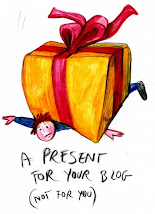
DURGA PUJA
Goddess Durga represents a united front of all Divine forces against the negative forces of evil and wickedness. The gods in heaven decided to create an all-powerful being to kill the demon king Mahishasur who was ready to attack them. At that very moment a stream of lightning dazzled forth from the mouths of Brahma, Vishnu and Mahesh and it turned into a beautiful, magnificent woman with ten hands. Then all the Gods furnished her with their special weapons. The image of Durga, the Eternal Mother destroying the demon, Mahishasur is symbolic of the final confrontation of the spiritual urge of man with his baser passions.
Durga Puja, ‘Worship of Durga’ also referred as Durgotsab, ‘Festival of Durga’ is an annual Hindu festival that celebrates worship of Hindu goddess Durga. It refers to all the six days observed as Mahalaya, Shashthi , Maha Saptami, Maha Ashtami, Maha Nabami and Bijoya Dashami.

The dates of Durga Puja celebrations are set according to traditional Hindu calendar and the fortnight corresponding the festival is called Debi Pokkho (‘Fortnight of the Goddess’). Debi Pokkho is preceded by Mahalaya, the last day of the previous fortnight Pitri Pokkho (‘Fortnight of the Forefathers’) and is ended on Kojagori Lokkhi Puja (‘Worship of Goddess Lakshmi on Kojagori Full Moon Night’).
Durga Puja is widely celebrated in West Bengal, Assam, Bihar, Jharkhand, Orissa and Tripura where it is a five-day annual holiday.

Not only it is the biggest Hindu festival celebrated throughout the State, but also the most significant socio-cultural event in Bengali society. Apart from Eastern part of India, Durga Puja is also celebrated in Delhi, Maharashtra, Gujarat, Punjab, Kashmir, Karnataka and Kerala. Durga Puja is also celebrated as a major festival in Nepal and Bangladesh. Nowadays, many non-residential Bengali cultural organizations arrange for Durgotsab in the countries like the United States, United Kingdom, Australia, Germany, France, Oman etc.
 The prominence of Durga Puja increased gradually during the British Raj in Bengal. After the Hindu reformists resemble Durga with India, she had become an icon for the Indian Independence movement. On the first quarter of the 20th century, the tradition of Community Puja was popularized due to this. After Independence, Durga Puja became one of the largest celebrated festivals in the whole world.
The prominence of Durga Puja increased gradually during the British Raj in Bengal. After the Hindu reformists resemble Durga with India, she had become an icon for the Indian Independence movement. On the first quarter of the 20th century, the tradition of Community Puja was popularized due to this. After Independence, Durga Puja became one of the largest celebrated festivals in the whole world.
Durga Puja includes the worships of Shiva, Lakshmi, Ganesha, Saraswati and Kartika also. Modern tradition have come to include the display of decorated pandals and artistically depicted idols of Durga, exchange of Bijoya Greetings and publication of Puja Annuals.
 In Bengal, Durga Puja is also called Akalbodhan ('untimely awakening of Durga'), Sharadiya Puja (‘autumnal worship’), Sharodotsab (‘festival of autumn’), Maha Puja (‘grand puja’), Maayer Pujo (‘worship of the Mother’) or only referred as Puja or Pujo.
In Bengal, Durga Puja is also called Akalbodhan ('untimely awakening of Durga'), Sharadiya Puja (‘autumnal worship’), Sharodotsab (‘festival of autumn’), Maha Puja (‘grand puja’), Maayer Pujo (‘worship of the Mother’) or only referred as Puja or Pujo.
The worship of Durga in the autumn is the year's largest Hindu festival of Bengal. Durga Puja is also celebrated in Nepal and Bhutan according to local traditions and variations.
 Puja means "worship," and Durga's Puja is celebrated from the sixth to tenth day of the waxing moon in the month of Ashwin which is the sixth month in the Bengali calendar. Occasionally, however, due to shifts in the lunar cycle relative to the solar months, it may also be held in the following month, Kartika.
Puja means "worship," and Durga's Puja is celebrated from the sixth to tenth day of the waxing moon in the month of Ashwin which is the sixth month in the Bengali calendar. Occasionally, however, due to shifts in the lunar cycle relative to the solar months, it may also be held in the following month, Kartika.
In the Krittibas Ramayana, Rama invokes the goddess Durga in his battle against Ravana. Although she was traditionally worshipped in the spring, due to contingencies of battle, Rama had to invoke her in the autumn akaal bodhan.
 The pujas are held over a ten-day period, which is traditionally viewed as the coming of the married daughter, Durga, to her father, Himalaya's home. It is the most important festival in Bengal, and Bengalis celebrate with new clothes and other gifts, which are worn on the evenings when the family goes out to see the 'pandals' (temporary structures set up to venerate the goddess). Although it is a Hindu festival, religion takes a back seat on these five days: Durga Puja in Bengal is a carnival, where people from all backgrounds, regardless of their religious beliefs, participate and enjoy themselves to the hilt.
The pujas are held over a ten-day period, which is traditionally viewed as the coming of the married daughter, Durga, to her father, Himalaya's home. It is the most important festival in Bengal, and Bengalis celebrate with new clothes and other gifts, which are worn on the evenings when the family goes out to see the 'pandals' (temporary structures set up to venerate the goddess). Although it is a Hindu festival, religion takes a back seat on these five days: Durga Puja in Bengal is a carnival, where people from all backgrounds, regardless of their religious beliefs, participate and enjoy themselves to the hilt.
In Kolkata alone more than two thousand pandals are set up, all clamouring for the admiration and praise of the populace. The city is adorned with lights. People from all over the country visit the city at this time and every night is one mad carnival where thousands of people go 'pandal-hopping' with their friends and family. Traffic comes to a standstill, and indeed, most people abandon their vehicles to travel by foot after a point. A special task force is deployed to control law and order. Durga Puja in Calcutta is often referred to as the Rio Carnival of the Eastern Hemisphere.
 Durga Puja is celebrated by the Indian Diasporas residing in different parts of the world. It is also celebrated in regions and by people culturally and historically distinct from India.
Durga Puja is celebrated by the Indian Diasporas residing in different parts of the world. It is also celebrated in regions and by people culturally and historically distinct from India.
Durga Puja, the most happening festival of the Bengalis can be sensed with its spurt of fanfare on all the four days of the festival. This autumnal festival recalls the power of female Shakti symbolized by the Goddess Durga who slays asura to reestablish peace and sanctity on earth again.
 Bengalis all over the world during these days of Durga Puja rejoice to their heart's content reconnecting with friends and relatives. Durga Puja is an occasion when the familiar sound of Dhak, Dhunuchi nachh,the mild fragrance of Shiuli, gives a familiar tug to every Bengali heart.
Bengalis all over the world during these days of Durga Puja rejoice to their heart's content reconnecting with friends and relatives. Durga Puja is an occasion when the familiar sound of Dhak, Dhunuchi nachh,the mild fragrance of Shiuli, gives a familiar tug to every Bengali heart.
After the three days of Puja, in Dashami, in the last day, a tearful farewell is offered to the Goddess. Most of the community pujas postpone the farewell as long as possible and arrange a grand send-off. The images are carried in processions around the locality and finally are immersed in a nearby river or lake. Vijaya Dashami is an event celebrated all over the country.
Durga Puja, ‘Worship of Durga’ also referred as Durgotsab, ‘Festival of Durga’ is an annual Hindu festival that celebrates worship of Hindu goddess Durga. It refers to all the six days observed as Mahalaya, Shashthi , Maha Saptami, Maha Ashtami, Maha Nabami and Bijoya Dashami.

The dates of Durga Puja celebrations are set according to traditional Hindu calendar and the fortnight corresponding the festival is called Debi Pokkho (‘Fortnight of the Goddess’). Debi Pokkho is preceded by Mahalaya, the last day of the previous fortnight Pitri Pokkho (‘Fortnight of the Forefathers’) and is ended on Kojagori Lokkhi Puja (‘Worship of Goddess Lakshmi on Kojagori Full Moon Night’).
Durga Puja is widely celebrated in West Bengal, Assam, Bihar, Jharkhand, Orissa and Tripura where it is a five-day annual holiday.

Not only it is the biggest Hindu festival celebrated throughout the State, but also the most significant socio-cultural event in Bengali society. Apart from Eastern part of India, Durga Puja is also celebrated in Delhi, Maharashtra, Gujarat, Punjab, Kashmir, Karnataka and Kerala. Durga Puja is also celebrated as a major festival in Nepal and Bangladesh. Nowadays, many non-residential Bengali cultural organizations arrange for Durgotsab in the countries like the United States, United Kingdom, Australia, Germany, France, Oman etc.
 The prominence of Durga Puja increased gradually during the British Raj in Bengal. After the Hindu reformists resemble Durga with India, she had become an icon for the Indian Independence movement. On the first quarter of the 20th century, the tradition of Community Puja was popularized due to this. After Independence, Durga Puja became one of the largest celebrated festivals in the whole world.
The prominence of Durga Puja increased gradually during the British Raj in Bengal. After the Hindu reformists resemble Durga with India, she had become an icon for the Indian Independence movement. On the first quarter of the 20th century, the tradition of Community Puja was popularized due to this. After Independence, Durga Puja became one of the largest celebrated festivals in the whole world.Durga Puja includes the worships of Shiva, Lakshmi, Ganesha, Saraswati and Kartika also. Modern tradition have come to include the display of decorated pandals and artistically depicted idols of Durga, exchange of Bijoya Greetings and publication of Puja Annuals.
 In Bengal, Durga Puja is also called Akalbodhan ('untimely awakening of Durga'), Sharadiya Puja (‘autumnal worship’), Sharodotsab (‘festival of autumn’), Maha Puja (‘grand puja’), Maayer Pujo (‘worship of the Mother’) or only referred as Puja or Pujo.
In Bengal, Durga Puja is also called Akalbodhan ('untimely awakening of Durga'), Sharadiya Puja (‘autumnal worship’), Sharodotsab (‘festival of autumn’), Maha Puja (‘grand puja’), Maayer Pujo (‘worship of the Mother’) or only referred as Puja or Pujo. The worship of Durga in the autumn is the year's largest Hindu festival of Bengal. Durga Puja is also celebrated in Nepal and Bhutan according to local traditions and variations.
 Puja means "worship," and Durga's Puja is celebrated from the sixth to tenth day of the waxing moon in the month of Ashwin which is the sixth month in the Bengali calendar. Occasionally, however, due to shifts in the lunar cycle relative to the solar months, it may also be held in the following month, Kartika.
Puja means "worship," and Durga's Puja is celebrated from the sixth to tenth day of the waxing moon in the month of Ashwin which is the sixth month in the Bengali calendar. Occasionally, however, due to shifts in the lunar cycle relative to the solar months, it may also be held in the following month, Kartika. In the Krittibas Ramayana, Rama invokes the goddess Durga in his battle against Ravana. Although she was traditionally worshipped in the spring, due to contingencies of battle, Rama had to invoke her in the autumn akaal bodhan.
 The pujas are held over a ten-day period, which is traditionally viewed as the coming of the married daughter, Durga, to her father, Himalaya's home. It is the most important festival in Bengal, and Bengalis celebrate with new clothes and other gifts, which are worn on the evenings when the family goes out to see the 'pandals' (temporary structures set up to venerate the goddess). Although it is a Hindu festival, religion takes a back seat on these five days: Durga Puja in Bengal is a carnival, where people from all backgrounds, regardless of their religious beliefs, participate and enjoy themselves to the hilt.
The pujas are held over a ten-day period, which is traditionally viewed as the coming of the married daughter, Durga, to her father, Himalaya's home. It is the most important festival in Bengal, and Bengalis celebrate with new clothes and other gifts, which are worn on the evenings when the family goes out to see the 'pandals' (temporary structures set up to venerate the goddess). Although it is a Hindu festival, religion takes a back seat on these five days: Durga Puja in Bengal is a carnival, where people from all backgrounds, regardless of their religious beliefs, participate and enjoy themselves to the hilt.In Kolkata alone more than two thousand pandals are set up, all clamouring for the admiration and praise of the populace. The city is adorned with lights. People from all over the country visit the city at this time and every night is one mad carnival where thousands of people go 'pandal-hopping' with their friends and family. Traffic comes to a standstill, and indeed, most people abandon their vehicles to travel by foot after a point. A special task force is deployed to control law and order. Durga Puja in Calcutta is often referred to as the Rio Carnival of the Eastern Hemisphere.
 Durga Puja is celebrated by the Indian Diasporas residing in different parts of the world. It is also celebrated in regions and by people culturally and historically distinct from India.
Durga Puja is celebrated by the Indian Diasporas residing in different parts of the world. It is also celebrated in regions and by people culturally and historically distinct from India.Durga Puja, the most happening festival of the Bengalis can be sensed with its spurt of fanfare on all the four days of the festival. This autumnal festival recalls the power of female Shakti symbolized by the Goddess Durga who slays asura to reestablish peace and sanctity on earth again.
 Bengalis all over the world during these days of Durga Puja rejoice to their heart's content reconnecting with friends and relatives. Durga Puja is an occasion when the familiar sound of Dhak, Dhunuchi nachh,the mild fragrance of Shiuli, gives a familiar tug to every Bengali heart.
Bengalis all over the world during these days of Durga Puja rejoice to their heart's content reconnecting with friends and relatives. Durga Puja is an occasion when the familiar sound of Dhak, Dhunuchi nachh,the mild fragrance of Shiuli, gives a familiar tug to every Bengali heart. After the three days of Puja, in Dashami, in the last day, a tearful farewell is offered to the Goddess. Most of the community pujas postpone the farewell as long as possible and arrange a grand send-off. The images are carried in processions around the locality and finally are immersed in a nearby river or lake. Vijaya Dashami is an event celebrated all over the country.






12 comments:
that was a very nice post. This is one puja i know of coz i myself am an oriya. :)
Very timely.Now,in Delhi also Durga Pooja is celebrated at a large scale...I know of Chittranjan Park and Kali Bari.
My best wishes on Durga Pooja.
Wow this Navrata is really very interesting !! I love this festival.great..Unseen Rajasthan
Nice Post and interesting.
My best wishes on Durga Pooja
Very nice article....i loved it. Wish u a very Happy Durga Puja!!
excellent images and great info.
Informative as always. :)
So how are you celebrating Durga Puja? Blog about that too. :)
Hi Babli! Another week has passed without a chance to drop by. It seems time runs faster when you get to a certain age... ;)
Interesting post! Always learning when I come here...
Blogtrotter is trying to have fun in the Turkish Riviera. Enjoy and have a marvellous weekend!
Very interesting. Durga Puja is our greatest and most eagerly-awaited festival and your post gives us all the details about it.
Happy Vijayadasami..Luckily we got an off today, even though it is amedia organisation..nice post
Shubho Bijoya to you.
This was a very nice post. Khub bhalo laglo pore. I hope you had a nice puja.
Wao.......what a colourfull painting!
Realy its uniQue n intersting
I have to come in your blog to see these beautifull pictures.
Post a Comment